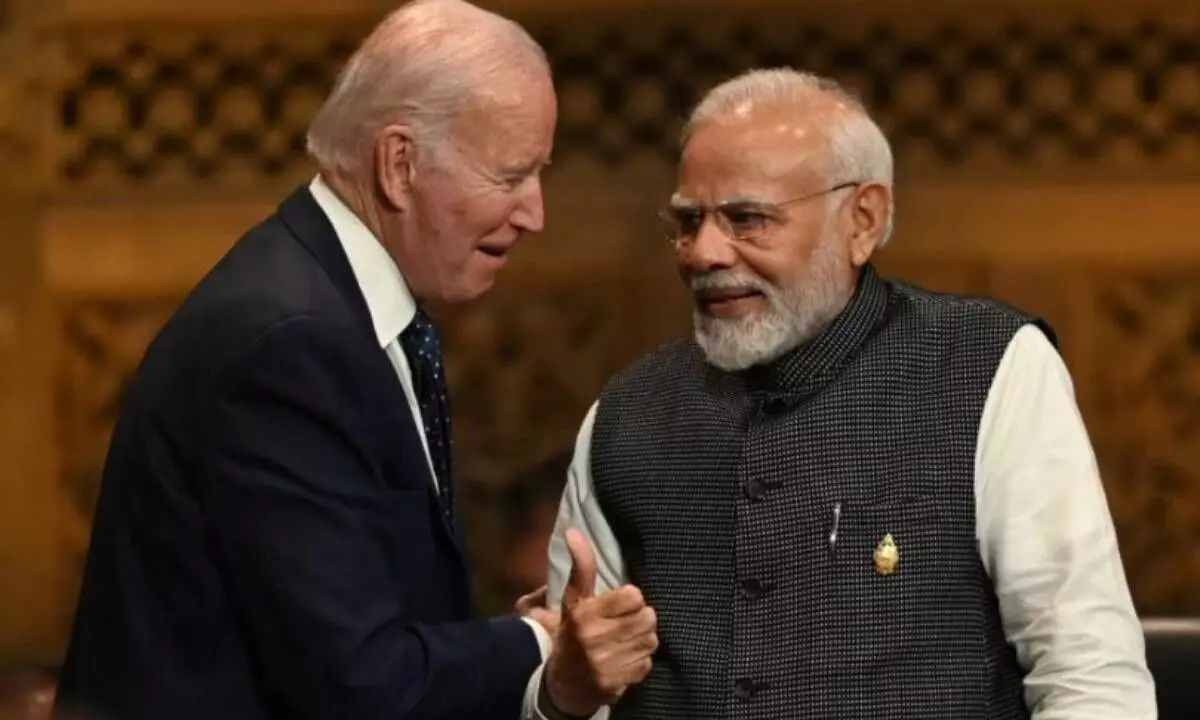A perfect blend of Indian talent and US technology makes for a bright future
By combining Indian talent with US technology, there is immense potential for collaboration and the creation of innovative solutions to global challenges. The exchange of knowledge, expertise, and resources between the two countries can lead to advancements in healthcare, agriculture, clean energy, education, and infrastructure
image for illustrative purpose

Technology is one the key drivers for empowering individuals, societies and countries. Believing that solutions of all the contemporary issues have to come from technology, Prime Minister Narendra Modi has been constantly emphasizing on the role of S&T for a promising future.
Addressing business honchos of India and America at the White House, Modi said that the coming together of Indian talent and US' technological advancement guarantees a bright future.
Let us understand this viewpoint.
Indian talent is renowned globally, particularly in areas such as engineering, information technology, and scientific research. The country has a large pool of highly skilled professionals who have made significant contributions to technology and innovation sectors.
On the other hand, the United States has long been at the forefront of technological advancements. It boasts of a robust ecosystem of research institutions, universities, and technology companies that have spearheaded breakthroughs in fields like artificial intelligence, biotechnology, renewable energy, and space exploration. The good thing is that both Modi and President Joe Biden consider technology as an important part of mutual partnership.
In a landmark deal that gives a massive boost to ties between the US and India, General Electric (GE) Aerospace has signed a MoU with Hindustan Aeronautics Limited (HAL) to manufacture fighter jet engines for the Indian Air Force. Now, India is set to get 11 key technologies as part of fighter jet engine deal which means that technology would be transferred to HAL for manufacturing Tejas Mk 2 engine. These state-of-the-art jet engines, known for their endurance and durability, will enhance IAF’s capacity. India has become the fifth country in the world to make this engine. The latest MoU makes it clear that the American policy of not sharing technology with India is now history. Another key takeaway for India from Modi's US visit is that memory chip company Micron has decided to set up a new semiconductor assembly and test facility in India. The manufacturing unit proposed in Gujarat will cater to the demands of both domestic and international markets. Micron Technology will invest up to $825 million over two phases and will create up to 5,000 direct jobs and 15,000 community jobs over the next several years.
Apart from the fighter jet engines and semiconductors, there are few other areas where technology will play a defining role in the bilateral partnership, e.g. generative AI, quantum computing, cyberspace, high-tech value chains, 5G and 6G telecom networks and the entire value chain of the space economy. By combining Indian talent with US technology, there is immense potential for collaboration and the creation of innovative solutions to global challenges. The exchange of knowledge, expertise, and resources between the two countries can lead to advancements in healthcare, agriculture, clean energy, education, and infrastructure.
Perhaps considering the role of a new India in this era of technology, America has extended a hand of friendship towards India. Now, America does not want to influence our policies, but only wants to work together. That's why India should also move ahead with full enthusiasm. Opportunities like this seldom come.
(The author is the Editor of India Science Channel, Vigyan Prasar, DST, Govt of India)

